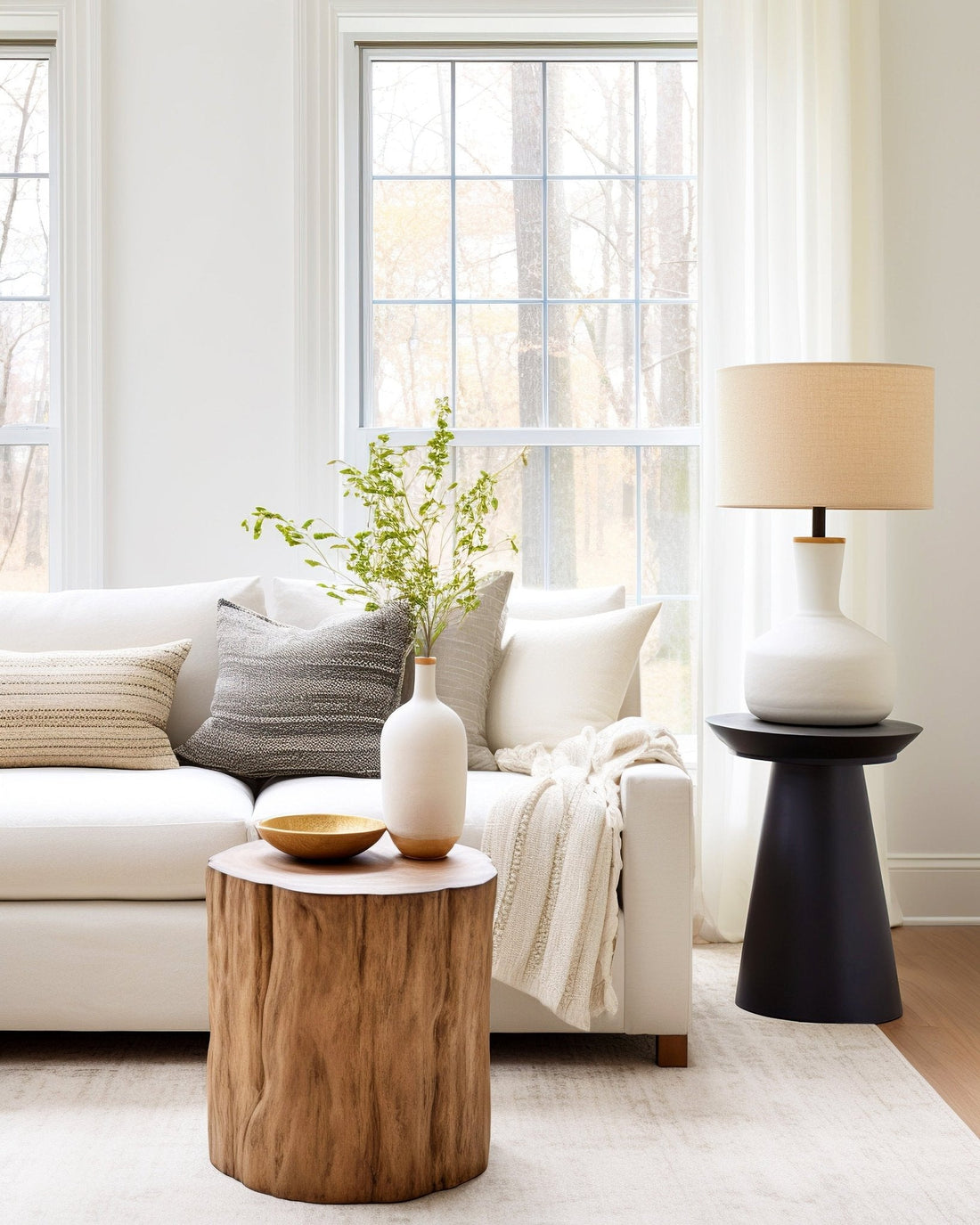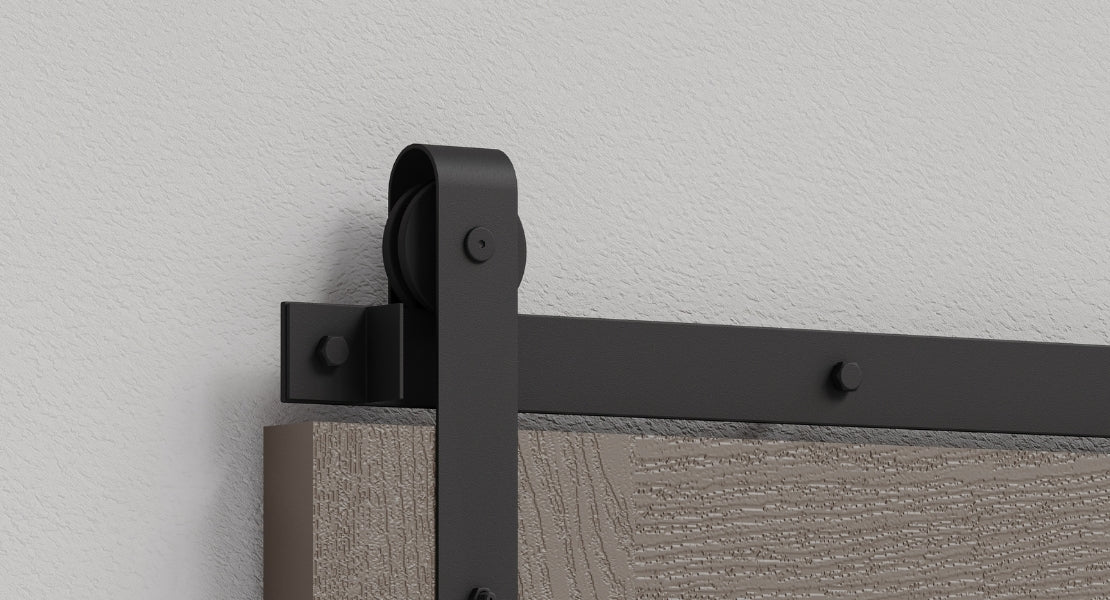
Choosing Materials to Suit Your Interior Design Style
When designing a brand-new home, refreshing a tired interior, or adding a personal touch to your property, the materials you choose set the tone for everything. From flooring and wall textures to fixtures and finishes, materials have a huge impact on your space's atmosphere, durability, and functionality. But with so many options out there, choosing materials can feel overwhelming.
In this guide, we’ll walk you through how to choose interior design materials that reflect your personal style, support your daily lifestyle, and stand the test of time. Along the way, we’ll demonstrate how features such as metal light fixtures and wooden barn doors can be seamlessly incorporated into almost any interior design scheme.
Determine your ideal interior design style
Before you start choosing materials for design projects, you must define your design style—or at least get a general sense of the aesthetic you’re drawn to.
- Modern & Minimalist. Think clean lines, neutral palettes, and smooth finishes, such as lacquered wood, glass, and matte metals.
- Rustic or Farmhouse. Embrace the charm of natural wood, stone, and distressed finishes.
- Industrial. A blend of raw and polished—concrete, steel, and reclaimed wood.
- Scandinavian. Light woods, soft textiles, and a mix of form and function.
- Eclectic or Bohemian. Defined by a freedom to layer materials, varied patterns, and organic textures.
Properly understanding what style your sensibility aligns with makes picking out design materials a lot easier and more logical.
Balancing aesthetics and practicality
It’s easy to fall for a material based on looks alone—but the elements in your home must also stand up to daily use. Ask yourself core questions like:
- Will the surface be exposed to moisture, heat, or heavy traffic?
- Is it easy to clean and maintain?
- Does it age well?
These kinds of questions are important in a variety of use cases. Natural stone countertops are stunning but may stain or etch if not sealed regularly. Hardwood floors add a timeless warmth to spaces, but may scratch more easily than engineered alternatives, and require occasional varnish.
How to choose design materials for your home
Let’s look at some of the most common materials used in interior design and how to choose the right one for your needs.
Wood
Wood brings warmth, character, and versatility. Popular wood types include red oak, cherry, and mahogany.
- Consider the grain and how it complements other textures in the space.
- Opt for sustainably interior design materials like sourced timber when possible.
- Lighter woods brighten a space; darker ones add drama.
Wooden design elements like barn doors or tables are incredibly versatile. Choose rustic reclaimed panels for a farmhouse feel, or smooth, stained finishes for a modern touch.
Metal
Used for accents, furniture, lighting, and hardware, metal can feel industrial, elegant, or ultra-modern depending on the finish.
- Brushed nickel or chrome is super contemporary and clean.
- Matte black offers a bold and trendy look.
- Brass or bronze make for warm, classic, or vintage vibes.
Matching or contrasting materials with metal is fun, with options to make statements with items like wall accents, door tracks, and handles, giving a space instant sophistication.
Glass
Glass is ideal for creating a sense of openness and light, helping to increase the visual flow of a property.
- Clear glass works well for modern, open-plan areas.
- Frosted glass adds privacy while maintaining brightness.
- Textured or patterned glass can add depth and visual interest.
Products like glass-paneled barn doors are an excellent way to separate rooms without blocking light, ideal in home offices, bathrooms, or even pantries
Stone and tile
Stone surfaces like marble or granite offer luxury and durability in highly functional areas of the home like kitchens and bathrooms. Tiles—whether ceramic, porcelain, or natural stone—allow for creativity in backsplashes and flooring throughout a home. There are also a range of tones to choose from, including more severe marbles and sandier, softer stone finishes.
Matching materials to create cohesion
While each room can have its personality, choosing materials and finishes with thoughtful consistency throughout your home helps create a cohesive flow.
- Use the same wood tone on floors, doors, and shelving.
- Match your hardware finishes across handles or light fixtures.
- Repeat accents across different rooms to create continuity.
If your home blends styles—say, a modern kitchen next to a rustic living room—barn doors can serve as an elegant transition point between them.
Contrasting materials like a pro
Mixing materials adds interest and personality to a space when done mindfully and intentionally.
- Contrast textures like rough wood with smooth metal.
- Stick to a color palette, even when mixing materials to prevent chaos.
- Echoing materials across a room helps pull the space together.
A barn door with metal hardware and a contrasting wood finish is a perfect example of this principle, combining materials, color, and function in one beautiful design element.
Choosing sustainable interior design materials
Materials that last longer and reduce environmental impact are increasingly important across homes. Being mindful is a great way to reduce your home’s footprint, while also saving money and effort in the long term. Consider materials like:
- FSC-certified wood
- Low-VOC paints and finishes
- Recycled or repurposed materials
- Durable hardware that won’t need regular replacing
Sustainability doesn’t mean sacrificing style. Many of the most timeless interior materials, like hardwood, stone, and quality metals, are environmentally sound.
Start choosing materials that make a statement
Choosing the right materials in interior design isn’t about following trends. It’s about aligning your home with your lifestyle, your tastes, and the desired atmosphere you’re looking to curate. Barn doors and hardware are a great one-installation feature that activates many of the principles we’ve discussed in this blog.
For more insights into interior design, along with more barn door-specific pieces, visit our blog today.


